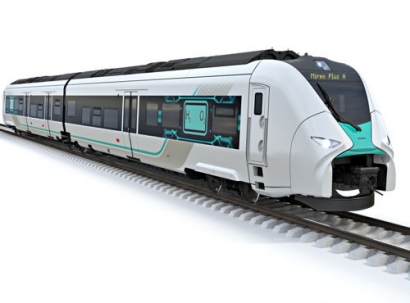
The Helmholtz Institute Erlangen-Nuremberg for Renewable Energy (HI ERN) is a leader in the field of so-called LOHC technology. In this process, an organic carrier liquid absorbs hydrogen and releases it only when needed. The hydrogen is thus chemically bound and can’t escape in a gas form. This way, it can be prepared and stored safely, and transported inexpensively. Storage under high pressure or at low temperatures is no longer necessary. A special advantage of the technology: LOHC is also suitable for the on-board generation of electrical power in mobile applications like trains.
Albrecht Neumann, CEO Rolling Stock, Siemens Mobility, said, “Siemens Mobility is especially pleased to be entering into a partnership with the renowned Helmholtz Institute Erlangen-Nuremberg to develop Liquid Organic Hydrogen Carrier technology in rail transport. Hydrogen technology is a promising solution for making rail transport climate-neutral. And since sustainability has a very high priority for us at Siemens Mobility, we’re providing a Vectron locomotive for testing the LOHC technology.”
Prof. Dr. Peter Wasserscheid, Director at the Helmholtz Institute Erlangen-Nuremberg for Renewable Energy, agrees. “Siemens Mobility’s interest in the LOHC technology that we’ve decisively developed over the past few years at the Friedrich-Alexander-University Erlangen-Nuremberg and at the HI ERN is an excellent basis for a possible cooperation in the future. We share with Siemens Mobility the vision of developing a hydrogen technology that uses the existing fuel infrastructure to power large vehicles like trains.”
Through the prospect of providing the Helmholtz Institute with a Vectron mainline locomotive from Siemens Mobility, the two partners have the opportunity to work together to demonstrate the feasibility of the LOHC concept.

